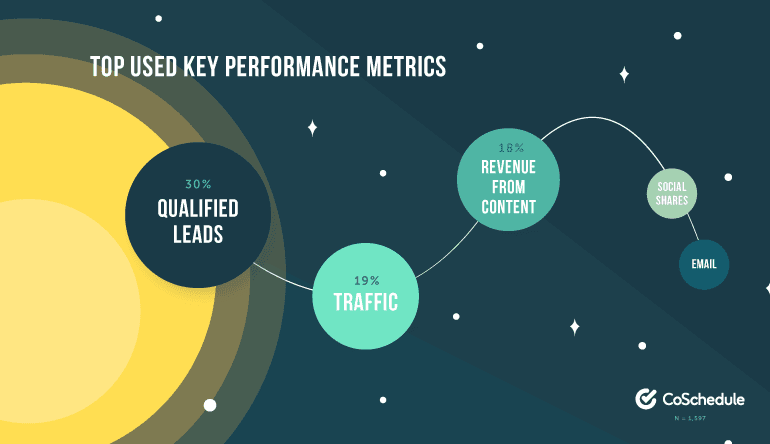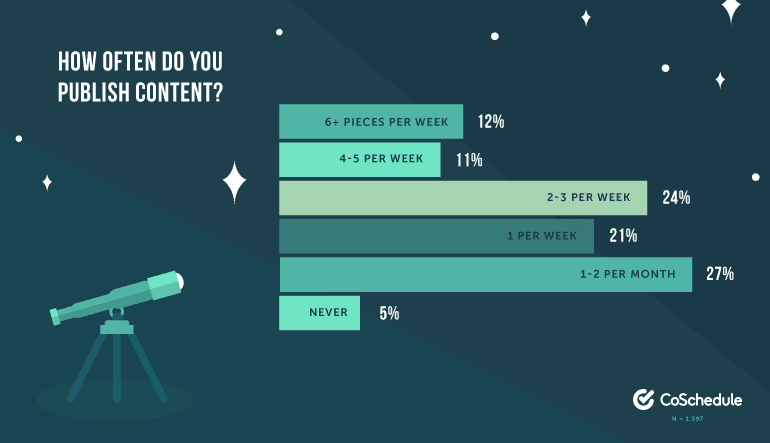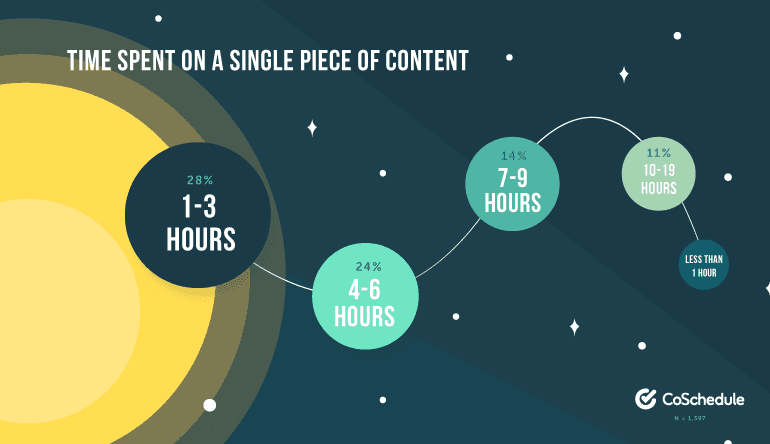Massive Survey Of 1600 Marketers: The Marketing Statistics You Need To Know To Be Successful In 2017
 Ever wonder which marketing statistics show what really separates successful marketers from those who struggle?
We have. So we surveyed 1,597 professional marketers from 83 countries to find out.
Ever wonder which marketing statistics show what really separates successful marketers from those who struggle?
We have. So we surveyed 1,597 professional marketers from 83 countries to find out.
 We wanted to know what the marketing stats say about common phrases like…
...you need a marketing plan to be successful.
...you must document your marketing strategy and processes.
...quality content is more important to success than quantity.
The list goes on.
However, everything is anecdotal until the data prove it. And we’ve discovered some interesting things that will surprise the industry.
In this post, we’re going to share these exclusive insights with you.
Because armed with them, you can:
We wanted to know what the marketing stats say about common phrases like…
...you need a marketing plan to be successful.
...you must document your marketing strategy and processes.
...quality content is more important to success than quantity.
The list goes on.
However, everything is anecdotal until the data prove it. And we’ve discovered some interesting things that will surprise the industry.
In this post, we’re going to share these exclusive insights with you.
Because armed with them, you can:
- Transform the way you make decisions based on what really works—and what doesn’t.
- Benchmark your activities against the most successful marketers in our study.
- Glean insight to plan what you should start doing—and stop doing (immediately).
- Assess where your marketing stands in relation to your peers.
Massive Survey Of 1600 Marketers: The Marketing Statistics You Need To Know To Be Successful In 2017
Click To TweetTop 4 Marketing Strategy Insights:
- Top marketers document their marketing strategy. Marketers who document strategy are 538% more likely to report success than those who don’t.
- Top marketers document their marketing processes. Marketers who document process are 466% more likely to report success than those who don’t.
- Top marketers set goals. Marketers who set goals are 429% more likely to report success than those who don’t. And 81% of those successful, goal-setting marketers achieve them.
- Top marketers conduct audience research. Successful marketers are 242% more likely to report conducting audience research at least once per quarter. And 56% of our study’s most elite marketers conduct research once or more per month.
 We had assumptions about what factors positively correlate to marketing success. To put them to the test, we measured all data against successful marketers—and the struggling ones, too.
Turns out, we were wrong about a few things.
Now, let’s jump into the findings and see what they have to offer you.
We had assumptions about what factors positively correlate to marketing success. To put them to the test, we measured all data against successful marketers—and the struggling ones, too.
Turns out, we were wrong about a few things.
Now, let’s jump into the findings and see what they have to offer you.
57% of Marketers Report Positive Marketing Results
We asked a simple question, “Is your marketing successful?” Just over half of marketers reported positive results. With 48% reporting they “somewhat agree,” and 9% reporting they “strongly agree.” This left 43% of marketers reporting either “neutral” or lackluster results. n = 1,597
But the big question is, “What does success mean?”
To get a more comprehensive look, we crunched the numbers. We wanted to know which things correlate to the successful marketing success—and which correlate with those who struggle.
n = 1,597
But the big question is, “What does success mean?”
To get a more comprehensive look, we crunched the numbers. We wanted to know which things correlate to the successful marketing success—and which correlate with those who struggle.
What Did We Predict About These Marketing Statistics?
Here were a couple of our hypotheses. (We’ll be revealing them all throughout the rest of this report.) We predicted:- Content is king. Marketers who spend more time creating content will say their marketing is successful.
- Quality over quantity. Marketers who have higher quality content will say their marketing is successful.
- There is virtually no correlation between time spent creating content and marketing success. (R = 0.02; n = 1,597; p-value < 0.0001)
- There is some positive correlation between content quality and marketing success. But, nothing earth shattering. (R = 0.29; n = 907; p-value; p-value < 0.0001)
Key Takeaway:
First, these stats don’t definitely prove quality content has been dethroned as a significant part of marketing success. However, they do cast shade on blanket statements like our hypotheses above. Here’s a reason for this. Data are good, but they don’t always tell the whole story. The question isn’t simply, “Are you creating epic, high-quality content?” Instead, it’s, “Are you creating the right kind of epic, high-quality content?” You can spend 30 hours or more on a single piece. But if it’s not laser-focused on the right audience… Or converting traffic into customers…
It won’t move the needle for your organization.
Content is not king; relevant content is. Don’t simply focus on creating high-quality content. Devote yourself to creating the right kind of high-quality content.
We asked Jayson DeMers, CEO of AudienceBloom, to weigh in:
You can spend 30 hours or more on a single piece. But if it’s not laser-focused on the right audience… Or converting traffic into customers…
It won’t move the needle for your organization.
Content is not king; relevant content is. Don’t simply focus on creating high-quality content. Devote yourself to creating the right kind of high-quality content.
We asked Jayson DeMers, CEO of AudienceBloom, to weigh in:

The Best Marketers Set Goals (And Achieve Them)
Next we asked, “Do you set marketing goals?” While almost two-thirds of our marketers reported success—the crowds divided sharply when it comes to goals. It’s true 70% said they set goals… ...but 81% of the marketing goals crowd also reported success. In fact, successful marketers are 4.3X more likely to set goals.Successful marketers are 4.3X more likely to set goals.
Click To Tweet In fact, our research shows marketers who set goals are 429% more likely to report success. And there is a reasonable correlation between these data, as well.
(R = 0.37; n = 907; p-value < 0.0001)
At CoSchedule, this backed up our experience that setting goals matters to achieving business objectives.
However, setting goals is not the same thing as achieving them.
So we asked the marketers who set goals this follow up question: “Are you successful in achieving your marketing goals?”
Goal setting is great. But…
...do these marketers actually hit their goals?
Our respondents answered:
In fact, our research shows marketers who set goals are 429% more likely to report success. And there is a reasonable correlation between these data, as well.
(R = 0.37; n = 907; p-value < 0.0001)
At CoSchedule, this backed up our experience that setting goals matters to achieving business objectives.
However, setting goals is not the same thing as achieving them.
So we asked the marketers who set goals this follow up question: “Are you successful in achieving your marketing goals?”
Goal setting is great. But…
...do these marketers actually hit their goals?
Our respondents answered:
- 58% often achieve them,
- 21% seldom achieve them,
- 9% don’t know,
- 6% always achieve them,
- And 6% rarely achieve them.
 And here’s where things got a bit interesting.
Our research shows marketers who both set goals and report marketing success accomplish 82% of those goals. There is a strong correlation between these data, as well.
(R = 0.5; n = 889; p-value < 0.0001)
Further, 60% of marketers who set goals also have a documented strategy.
(R = 0.45; n = 1,121; p-value < 0.0001)
And the trifecta: 59% of marketers who report success both set goals and have a documented strategy.
And here’s where things got a bit interesting.
Our research shows marketers who both set goals and report marketing success accomplish 82% of those goals. There is a strong correlation between these data, as well.
(R = 0.5; n = 889; p-value < 0.0001)
Further, 60% of marketers who set goals also have a documented strategy.
(R = 0.45; n = 1,121; p-value < 0.0001)
And the trifecta: 59% of marketers who report success both set goals and have a documented strategy.
59% of marketers who report success set goals and have a documented strategy.
Click To TweetKey Takeaway:
To set your team up for success, set goals. And do so understanding that maintaining the status quo is risky, too. Achieving new goals will require new actions and skills. But old habits are tough to break and new ones hard to form. Understanding the psychology behind habit formation will be helpful. When setting audacious goals, consider how your work needs to depart from the status quo. Not sure where to start in actually accomplishing these goals? Follow MIT’s lead and set SMART goals. Then, to accomplish them, generate the best project ideas of your career—and do it with your team in 30 minutes or less.
Then, to accomplish them, generate the best project ideas of your career—and do it with your team in 30 minutes or less.
Marketing Success By The Numbers
To further round out what success looks like, we asked, “What is the primary key performance indicator on which you base your marketing’s success?” We found the top three KPIs were:- Qualified leads at 30%,
- Traffic at 19%,
- And direct revenue earned from content at 18%.
 However, we found virtually no correlation between the primary KPIs tracked and marketing success. (R = 0.15; n = 889; p-value < 0.0001)
So primary KPI doesn't have much to do with success. But there’s more to the story.
Interestingly, 61% of those who responded, “I don’t have a key performance indicator,” also answered that they do not set marketing goals.
And… are you ready for this?
Only 4% of successful marketers said that they do not have a primary KPI.
However, we found virtually no correlation between the primary KPIs tracked and marketing success. (R = 0.15; n = 889; p-value < 0.0001)
So primary KPI doesn't have much to do with success. But there’s more to the story.
Interestingly, 61% of those who responded, “I don’t have a key performance indicator,” also answered that they do not set marketing goals.
And… are you ready for this?
Only 4% of successful marketers said that they do not have a primary KPI.
Only 4% of successful marketers said that they do not have a primary KPI.
Click To TweetKey Takeaway:
While we found weak correlation between specific KPIs and success, the evidence points to measuring KPIs is a contributor to success. Because our finding that marketers who set goals were 429% more likely to report success than those who don't, we conclude that your specific goal-driven KPI isn’t the most important thing. Instead, it’s that you measure performance against your goals and at least some defined metric. To quote Peter Drucker: “What gets measured gets improved.”A Documented Strategy Matters
Our next question was, “Do you have a documented strategy that drives all of your marketing efforts?” It turns out, less than half of marketers responded positively to having documented strategy, with 48% saying they did. And this finding is where things got really interesting. Our research shows marketers with a documented strategy are 538% more likely to report success than those who don’t.
There is a definite correlation between these data, as well.
(R = 0.48; n = 889; p-value < 0.0001)
Joe Pulizzi said: “[M]arketers who document their strategy are much more likely to accomplish their content marketing goals and be successful.”
It turns out, he’s dead on.
Pulizzi cites a study by Dominican University’s Gail Matthews that found “people who write down their goals, review them consistently, and share their goals with friends or colleagues are 33% more successful in achieving their goals than those people who just had goals.”
Our research shows marketers with a documented strategy are 538% more likely to report success than those who don’t.
There is a definite correlation between these data, as well.
(R = 0.48; n = 889; p-value < 0.0001)
Joe Pulizzi said: “[M]arketers who document their strategy are much more likely to accomplish their content marketing goals and be successful.”
It turns out, he’s dead on.
Pulizzi cites a study by Dominican University’s Gail Matthews that found “people who write down their goals, review them consistently, and share their goals with friends or colleagues are 33% more successful in achieving their goals than those people who just had goals.”
Key Takeaway:
84% of our survey participants work on marketing teams. Why does this matter? Because documented strategy is an engine for clear communication. And when you consider that 60% of marketers who set goals also document their strategy, you have a recipe for a team rowing in the same direction. In fact, a team from MIT’s Human Dynamics Laboratory documented “the behavior of teams that ‘click.’” Using what they dub “sociometric” badges, they collected data on communication behavior within teams. One of their key findings: “patterns of communication [are] the most important predictor of a team’s success.” Documenting strategy isn’t a magic panacea for your team’s communication issues. But it is a centralized way ensure everyone on board knows where you’re going, how you’re going to get there, and what their involvement should be.
Documenting strategy isn’t a magic panacea for your team’s communication issues. But it is a centralized way ensure everyone on board knows where you’re going, how you’re going to get there, and what their involvement should be.
Your Documentation Should Get Granular With Workflows
Related to the last question, we asked, “Do you have documented workflows/processes to execute your marketing tasks efficiently?” We found 34% of marketers “somewhat agree” to documenting workflows/process. And only 13% “strongly agree.” This figure is almost identical to the number of marketers who document their strategy. Our research shows marketers with documented processes are 466% more likely to report success. There is a definite, positive correlation between these data. (R = 0.45; n = 889; p-value < 0.0001)
However, the hypotheses we were testing were: “Marketers who document workflows/processes publish more content. And marketers who publish more content often reach their goals.”
But…
…documented processes are weakly correlated with increased publishing frequency.
(R = 0.21; n = 1,597; p-value < 0.0001)
Additionally, there is an even weaker frequency between publishing frequency and achieving marketing goals.
(R = 0.19; n = 1,597; p-value < 0.0001)
(R = 0.45; n = 889; p-value < 0.0001)
However, the hypotheses we were testing were: “Marketers who document workflows/processes publish more content. And marketers who publish more content often reach their goals.”
But…
…documented processes are weakly correlated with increased publishing frequency.
(R = 0.21; n = 1,597; p-value < 0.0001)
Additionally, there is an even weaker frequency between publishing frequency and achieving marketing goals.
(R = 0.19; n = 1,597; p-value < 0.0001)
Key Takeaway:
So what should we make of this? Documenting processes is strongly correlated with success—and even holds a 4.7X greater likelihood of success. To supercharge your marketing success, document processes and workflows. A process is made of a series of tasks. To document process means to outline the tasks needed to complete a given process... ...plus documenting each task. Here's a simple task documentation formula:- Task description. Name the task in this schema: {strong action verb} + {overview of task details}. For example: "Research keywords and LSIs."
- Definition of done. Unambiguously define what the task will look like when complete. For example: "Find keyword with difficult of 60 or lower with a volume of at least 100 searches per month."
- Person responsible. Simply put, who is going to do the work?
- Deadline. When must the work be complete by?
- Estimated time to complete. Providing an estimate for how long a task should take is a major boost to productivity and getting past roadblocks. For example: "Keyword research should take 30 minutes or less."
Does Publishing Frequency Really Matter?
Next, we asked: “How often do you publish content?” Most marketers publish at least once per week:- 24% publish 2–3 pieces per week
- 21% publish 1 piece per week
- 12% publish 6+ pieces per week
- 11% publish 4–5 pieces per week
 Our research surprised us.
There is a weak correlation between publishing frequency and marketing success.
(R = 0.2; n = 910; p-value < 0.0001)
And a slightly weaker correlation between publishing frequency and achieving goals.
(R = 0.19; n = 910; p-value < 0.0001)
So what does this mean? Especially in light of a study like Hubspot’s…
Hubspot published data on publishing frequency and reached this conclusion: publish more content to be successful.
They cited that: “Companies that published 16+ blog posts per month got almost 3.5X more traffic than companies that published between 0 - 4 monthly posts.”
They continued to say that: “Companies that published 16+ blog posts per month got about 4.5X more leads than companies that published between 0 - 4 monthly posts.”
The Hubspot crew measured results specific to blogging—ours was not.
Our research surprised us.
There is a weak correlation between publishing frequency and marketing success.
(R = 0.2; n = 910; p-value < 0.0001)
And a slightly weaker correlation between publishing frequency and achieving goals.
(R = 0.19; n = 910; p-value < 0.0001)
So what does this mean? Especially in light of a study like Hubspot’s…
Hubspot published data on publishing frequency and reached this conclusion: publish more content to be successful.
They cited that: “Companies that published 16+ blog posts per month got almost 3.5X more traffic than companies that published between 0 - 4 monthly posts.”
They continued to say that: “Companies that published 16+ blog posts per month got about 4.5X more leads than companies that published between 0 - 4 monthly posts.”
The Hubspot crew measured results specific to blogging—ours was not.
Key Takeaway:
The key takeaway here is that a stat like frequency should be a guidepost rather than gospel. Results in our survey showed that 52% of successful marketers publish content 8+ times per month. But the correlation strength simply isn’t there to give a blanket statement that high publishing frequency equals better results. For example, what if only one or two pieces of content are responsible for the lion’s share of those results? Instead, if you experiment with increasing your publishing frequency, continue to measure the effectiveness of individual pieces of content as well. After all, the more content you produce, the greater your chances of hitting a home run… ...so long as you publish the right stuff. But the true benefit would be discovering the patterns that exist throughout your most successful pieces. What if you could find a way to increase success while actually decreasing the volume of content you publish? At CoSchedule, we increased our publishing volume by four pieces per month. And do you know what increase in results we saw? Virtually none. Our conclusion: increase publishing frequency as a test, not as a rule.
Is Content Quality A Marker Of Success?
We asked marketers, “Do you consider your content to be of higher quality than your competition's?” 74% of our study’s successful marketers consider their content higher quality than their competition’s. But…
Our research shows surprisingly little correlation between time spent creating content and the quality of their content. (R = 0.17; n = 1,121; p-value <0.0001)
Additionally…
There is an even weaker correlation between those with self-reported “high-quality content” and achieving their marketing goals. (R = 0.15; n = 1,121; p-value <0.0001)
So, even though three-fourths of marketers say they have better content than their competitors:
But…
Our research shows surprisingly little correlation between time spent creating content and the quality of their content. (R = 0.17; n = 1,121; p-value <0.0001)
Additionally…
There is an even weaker correlation between those with self-reported “high-quality content” and achieving their marketing goals. (R = 0.15; n = 1,121; p-value <0.0001)
So, even though three-fourths of marketers say they have better content than their competitors:
- Time spent creating it has no impact on its quality
- And its quality has little correlation to achieving their goals.
 My hypothesis was more time spent creating content would directly influence its reported quality.
Did this hold true?
There is a pretty weak correlation between a marketer’s time spent creating a single piece of content and the reported quality of that content. (R = 0.17; n = 1,597; p-value < 0.0001)
This was surprising. Also surprising was this finding…
Our research shows a very weak correlation between time spent creating content and achieving marketing goals. (R = .08; n = 1,597; p-value < 0.0001)
My hypothesis was more time spent creating content would directly influence its reported quality.
Did this hold true?
There is a pretty weak correlation between a marketer’s time spent creating a single piece of content and the reported quality of that content. (R = 0.17; n = 1,597; p-value < 0.0001)
This was surprising. Also surprising was this finding…
Our research shows a very weak correlation between time spent creating content and achieving marketing goals. (R = .08; n = 1,597; p-value < 0.0001)
Does time spent creating content equal a greater change of achieving marketing goals?
Click To TweetKey Takeaway:
So do these marketing statistics mean content quality is irrelevant? And that it’s pointless to spend loads of time creating content? I don’t think so. But, it does mean that a simple “quality over quantity” mindset won’t cut it. And that sinking loads of time into content creation doesn’t equate to rock-solid results. There was a slightly positive correlation between content quality and marketing success. (R = .29; n = 1,101; p-value < 0.0001) But nothing earth shattering.
Instead, what these stats indicate is we may have an epidemic of marketers creating the wrong kind of content.
There was a slightly positive correlation between content quality and marketing success. (R = .29; n = 1,101; p-value < 0.0001) But nothing earth shattering.
Instead, what these stats indicate is we may have an epidemic of marketers creating the wrong kind of content.
The Blogosphere Is As Crowded As Ever
So, with all of this talk of content quality, what kinds of content are marketers actually creating? To find out, we asked, “What is the primary type of content you create?” Overwhelmingly, marketers are creating:- Blog posts at 48%,
- Social media campaigns at 24%,
- And email campaigns at 14%.
 These statistics held study for successful marketers, as well. The primary content types created by successful marketers were:
These statistics held study for successful marketers, as well. The primary content types created by successful marketers were:
- Blog posts at 48%,
- Social media campaigns at 25%,
- And email campaigns at 14%,
- Ads at 6%,
- Whitepapers at 3%,
- Ebooks at 2%,
- Webinars at 1%,
- And Podcast episodes at 1%.
Key Takeaway:
There is no correlation between type of primary content created and marketing success. However, blogging is a priority for marketers across the board. Three things stand out here. First, the blogosphere will continue to be one of the most crowded publishing arenas. After all, there are 80 million new WordPress posts published every month. Second, blogging is a competitive, full-contact sport. But, it’s also a low-barrier to entry activity with a high potential reward—when done well. Third, consider adding lower-competition content to your mix. Pilot a podcast or write an ebook. Then measure your ROI against your other content.Audience Research Is A High-Value Activity
We wanted to know, “How often do you conduct audience research such as surveys or customer interviews?” The majority of marketers rarely conduct research, with 65% reporting seldom to none at all. What impact does research have on the 35% who do?
Our research found successful marketers are 242% more likely to report conducting audience research at least once per quarter (when compared with those who don’t).
And marketers who do so at least once per year or more are 303% more likely to achieve their marketing goals (80% of the time or more).
Additionally, 56% of marketers who “strongly agree” their marketing is successful conduct audience research once or more per month.
What impact does research have on the 35% who do?
Our research found successful marketers are 242% more likely to report conducting audience research at least once per quarter (when compared with those who don’t).
And marketers who do so at least once per year or more are 303% more likely to achieve their marketing goals (80% of the time or more).
Additionally, 56% of marketers who “strongly agree” their marketing is successful conduct audience research once or more per month.
56% of marketers who believe they're successful conduct audience research once or more per month.
Click To TweetKey Takeaway:
There is definite value in conducting research. For content marketers, an angle to consider is using audience research to create user personas. As one study on audience personas found: “Companies who meet or exceed revenue goals are 2.4X as likely to be effective or very effective at using personas than those who miss lead and revenue goals.” This closely pairs with our findings. And even sheds more light on surprisingly weak correlation between content quality and success.
To create the right kind of content, you need to deeply understand your audience. And research is a prime way to do so.
This closely pairs with our findings. And even sheds more light on surprisingly weak correlation between content quality and success.
To create the right kind of content, you need to deeply understand your audience. And research is a prime way to do so.
Before You Go Wild...
A final note before you go wild applying these findings. These data points are guide posts. Keep in mind there are often caveats the numbers themselves don’t tell us. Whenever you come across a report like ours, it’s always important to keep a few things in mind.- Correlation does not equal causation. Just because two data points are correlated doesn’t necessarily mean one causes the other.
- Contextualize all findings to your marketing goals. Resist the urge to blindly follow data. Be smart in learning from our study. Apply the key findings like we have. Then measure your results to ensure they work for you.
- There are limitations to even the best survey data sets. We’ve crunched the numbers on the marketing stats... But numbers don’t always tell the full story. So be a savvy marketer and assess our conclusions for yourself.
Conclusion
We just threw a lot of numbers at you. It can be easy to get lost. So start by applying the strongest predictors of marketing success to your work:- Documenting your marketing strategy;
- Documenting your marketing processes;
- Setting marketing goals;
- And conducting audience research.
See how your marketing stacks up to this survey of 1,600 marketers
Click To Tweet

